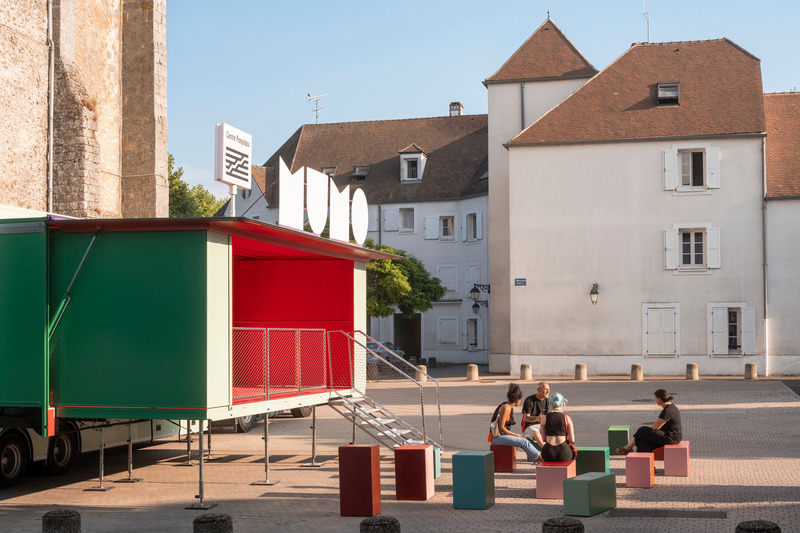- 5 January 2024
- 547 defa okundu.
In Pursuit of Art: The Truck Museum
Hérault Arnod Architectures presents the project to create a museum truck for the MUMO Association and the Centre Pompidou.
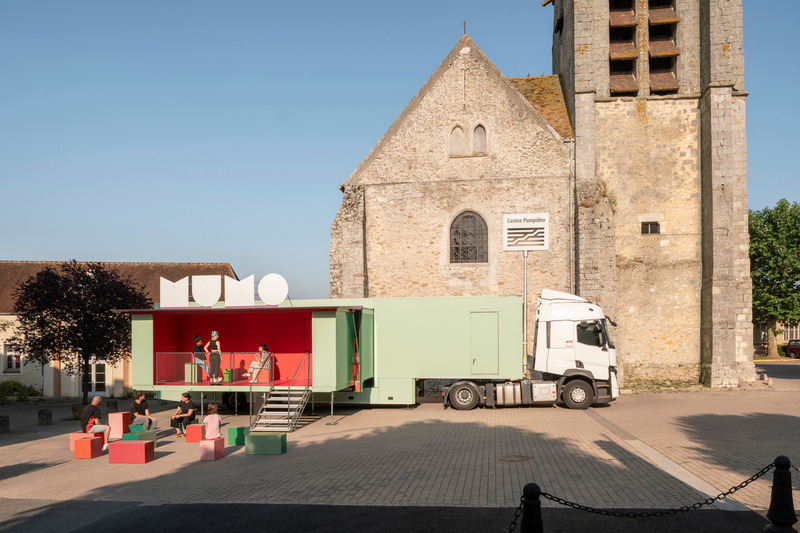
Hérault Arnod Architectures unveils a project to create a museum truck for the MUMO association and the Centre Pompidou, born of a collaboration between the architects of Hérault Arnod and artist Krijn de Koning.
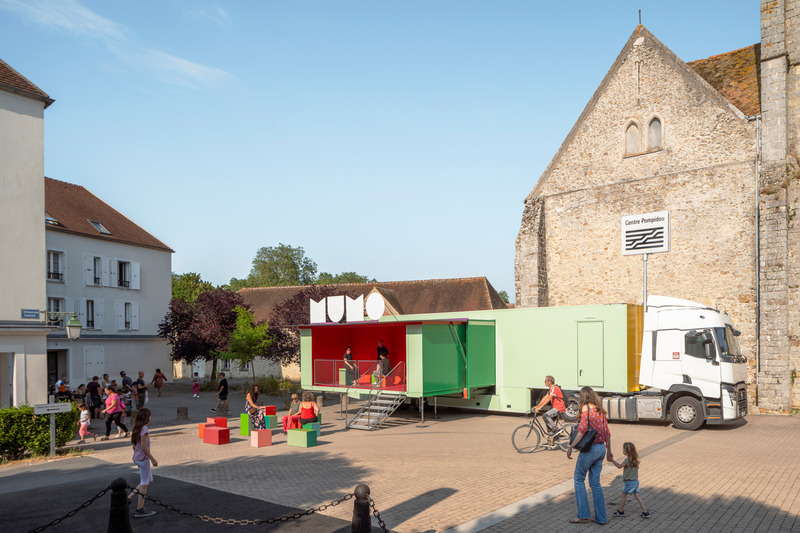
The result is a truck-work that allows a large exhibition space to the art works on display, hanged in the conditions of a small museum.
It was imagined as a multifunctional tool, simple and adaptable to different uses.
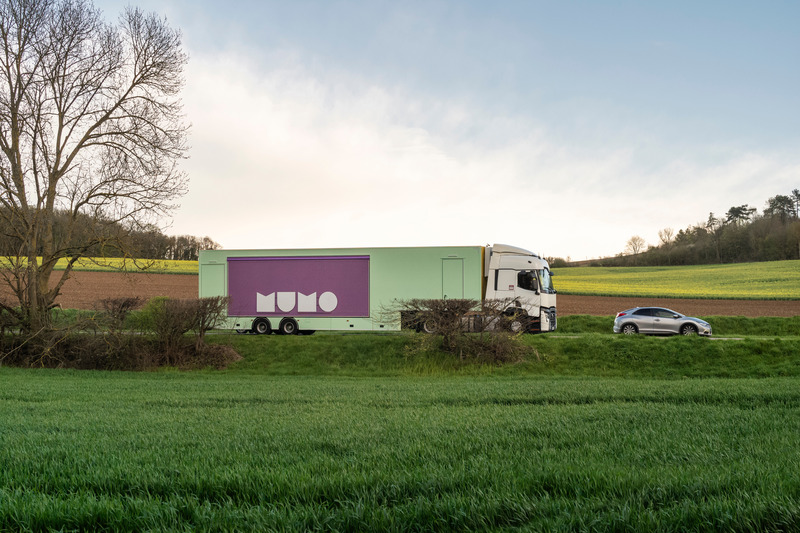
The truck museum will travel throughout France and abroad to reach a wide variety of audiences, particularly those who are not used to visiting museums.
The latest study by the Ministry of Culture shows that, in addition to a general decline in museum attendance in France over the last ten years, certain social categories and people living in rural areas rarely go to see an exhibition.
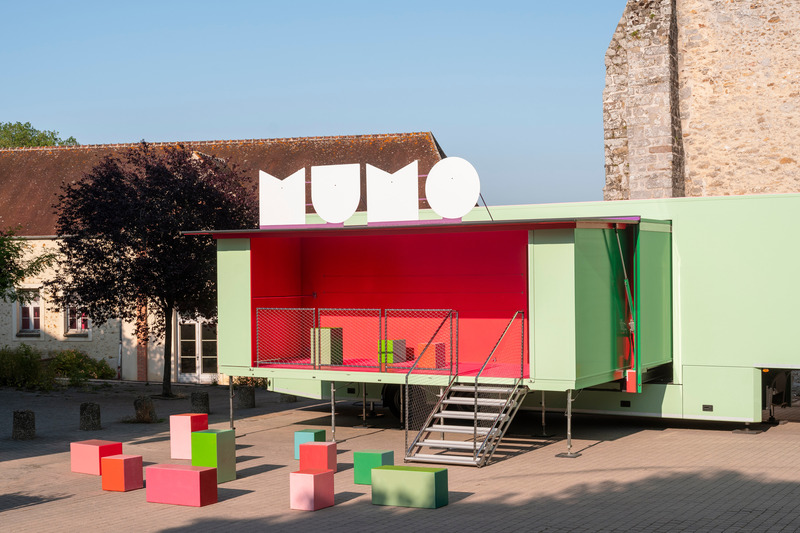
The truck museum is especially designed for them – children and adults who are not used to going through the doors of cultural institutions.
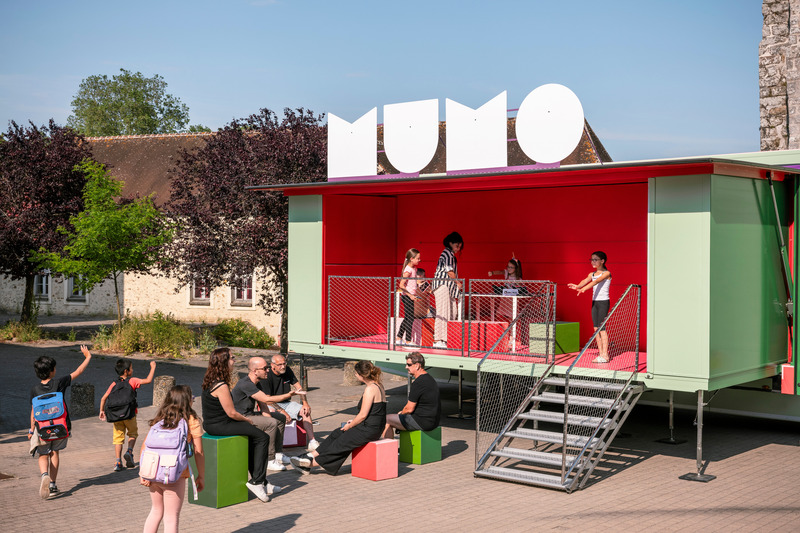
The truck’s rollout
The arrival of the truck in village squares, parking lots, parks, or any other public space is greeted with fanfare.
Small wonder, as it evokes fairground architecture on wheels.
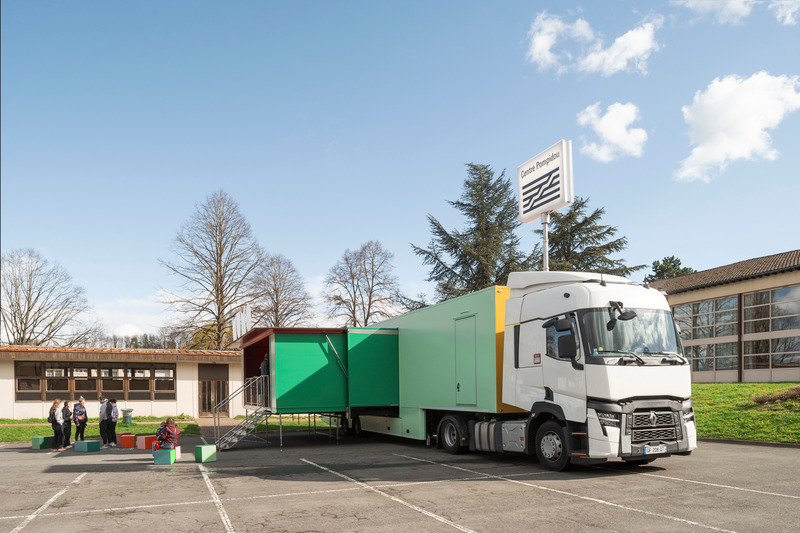
The side drawers of the truck come out, with several panels unfolding horizontally and vertically to form a front porch.
The staircase is then put in place.
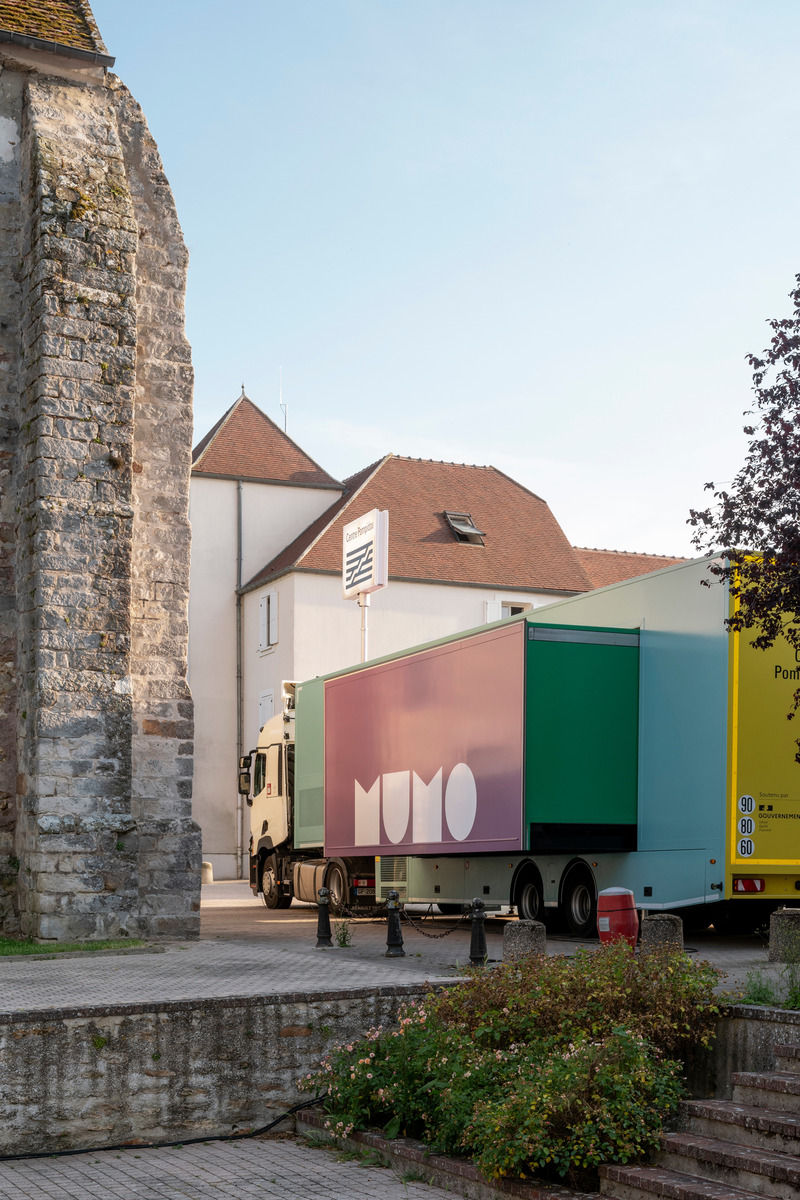
The illuminated sign (that was folded in the space between the trailer and the tractor) is attached to a telescopic mast that rises and pivots above the truck.
The basic volume of the vehicle is transformed and opens up, offering an open and welcoming space in the transition between the interior and the exterior.
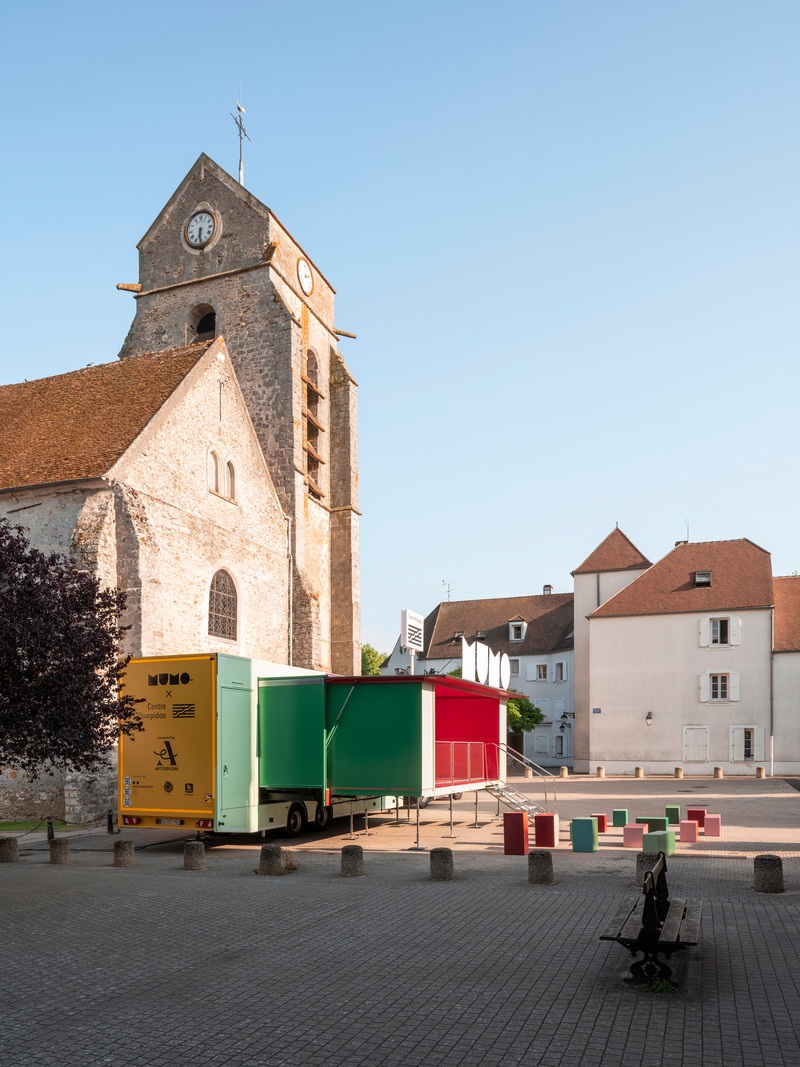
The museum’s three spaces: The visitor experience
The museum is comprised of three spaces: The loggia, the exhibition room, and the alcove.
The loggia opens to the outside like a theater stage and can be used for various purposes.
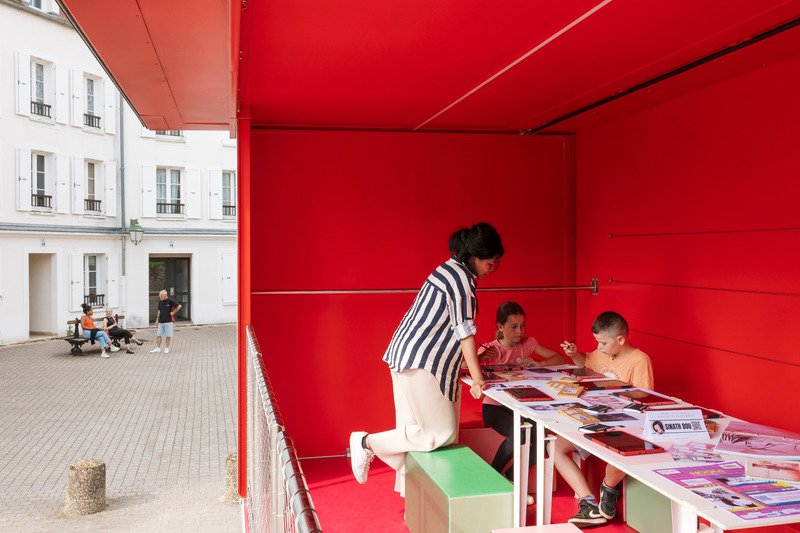
Its primary function is to welcome the public in an elevated space prior to entering the exhibition room, located on the same level.
Visitors can check their coats in checkrooms positioned on the side of the room, and adequate seating is provided.

It is a sheltered area where discussions with the mediators take place, and where groups await their visit of the exhibition, all under cover.
The creations of children in the workshops can be exhibited there.
In winter, the loggia is closed with a translucent curtain to protect visitors from bad weather.
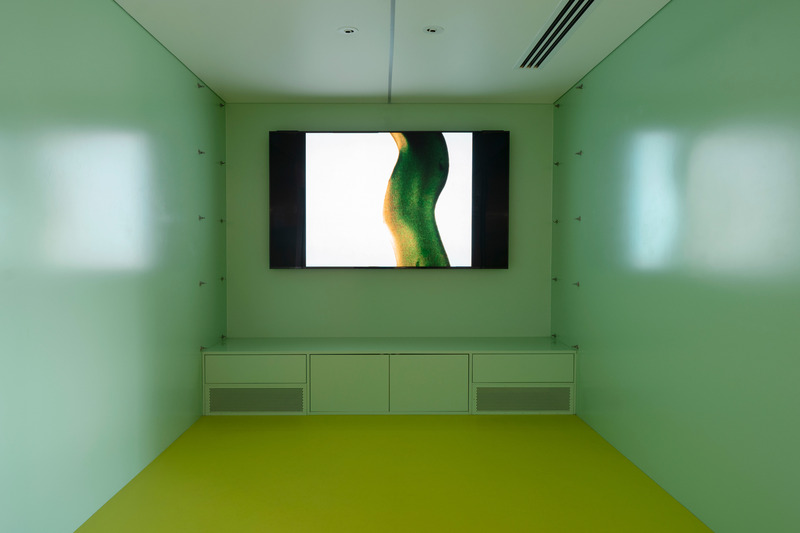
The loggia, a mediation space between the museum and the city, can also be used as an outdoor stage for performances or concerts.
It can be closed off by a screen and transformed into an open-air cinema (rear projection from inside the loggia).

The graphics of the cut-out letters topping the loggia of the “MUMO” are easily identifiable by children, with the ensemble conjuring up visions of a minimalist version of a fairground stand.
For the mobility-impaired, an elevator stored under the trailer can be put in place on request, providing access to a side door next to the main entrance.
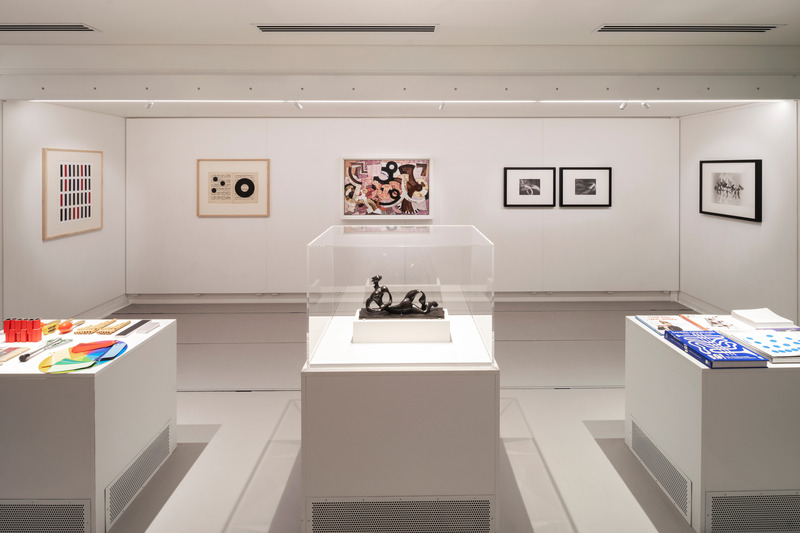
The exhibition room is the core of the facility. It is a refined space for showcasing the works, where the technical elements are carefully tucked away to eliminate visual disturbances. The volume is optimized, with the surface closest to the square measuring 35m².
Entry is accessed from the loggia, laterally and not from the back, freeing up a beautiful surface for hanging pictures at the bottom of the truck.
The central, hollow part of the ceiling is hidden to make for a smooth, flat surface with integrated lighting and ventilation grids.
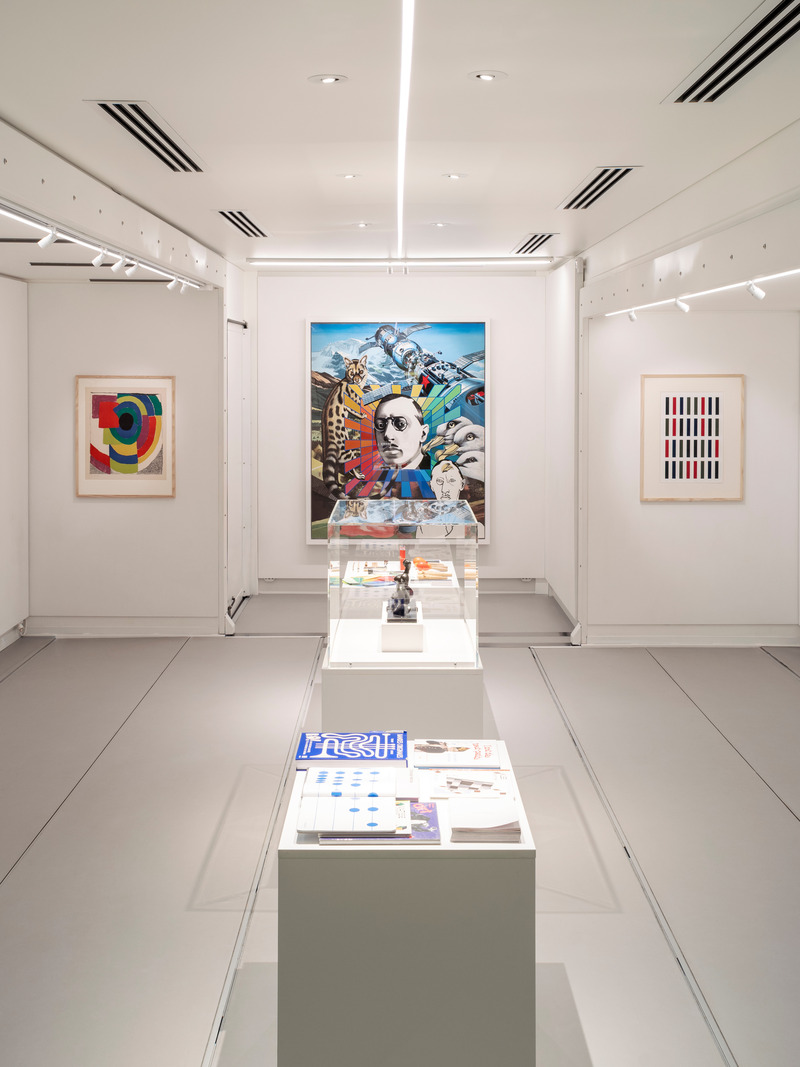
The ceiling and all of the walls are white, and the floor is light gray.
The team endeavored to create hanging conditions identical to those of a museum, without any apparent device.
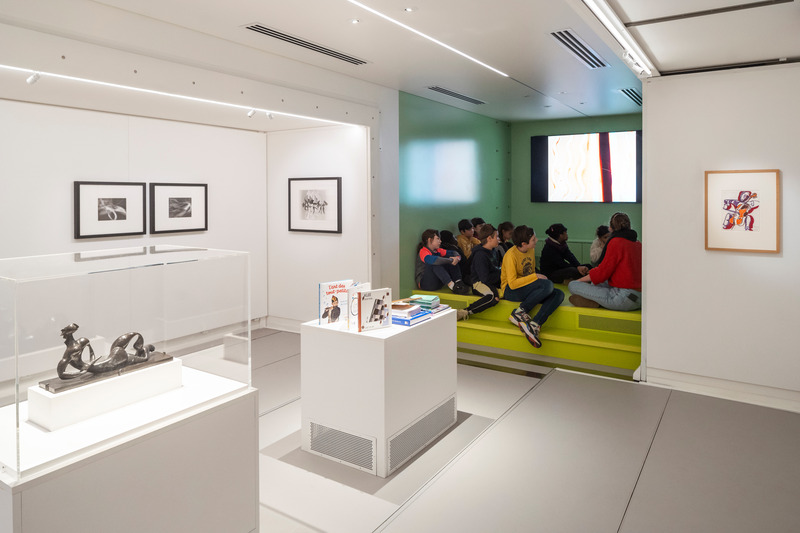
Paintings are fixed directly into walls equipped with a damping system to absorb the vibrations of the truck and protect the art works.
In the center, three white pieces of furniture on a square base serve as a pedestal for objects and storage, and incorporate ventilation grills.
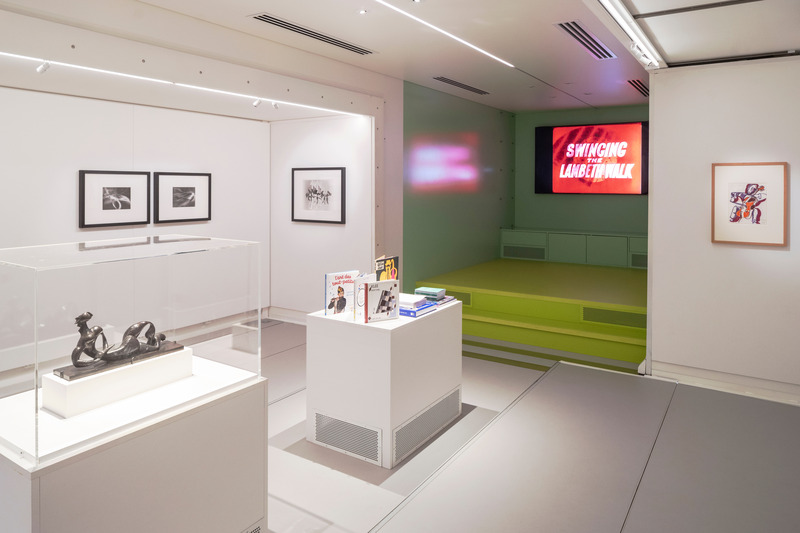
The alcove is a raised space that extends from the exhibition room.
It is narrower, and its volume is less suitable for hanging works on the walls.
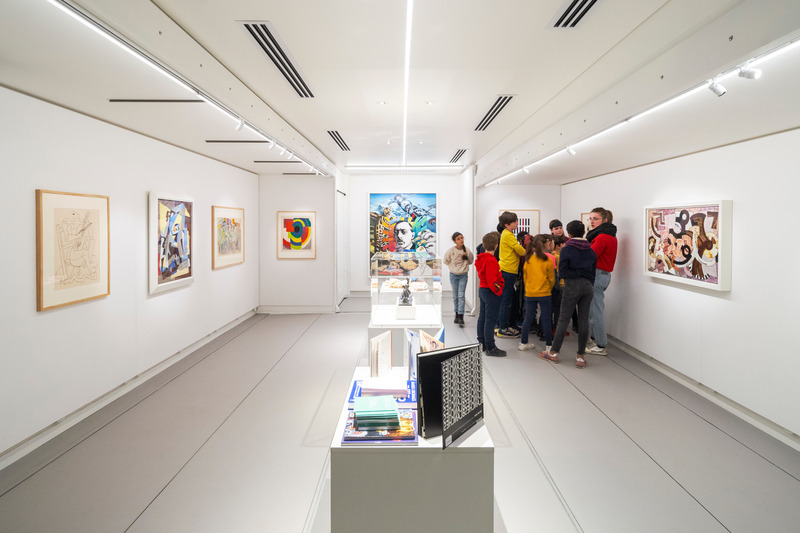
It is a transformable space that can serve as a projection room with seating, as a host space for sculptures, or as a work in itself, conceived by Krijn de Koning.
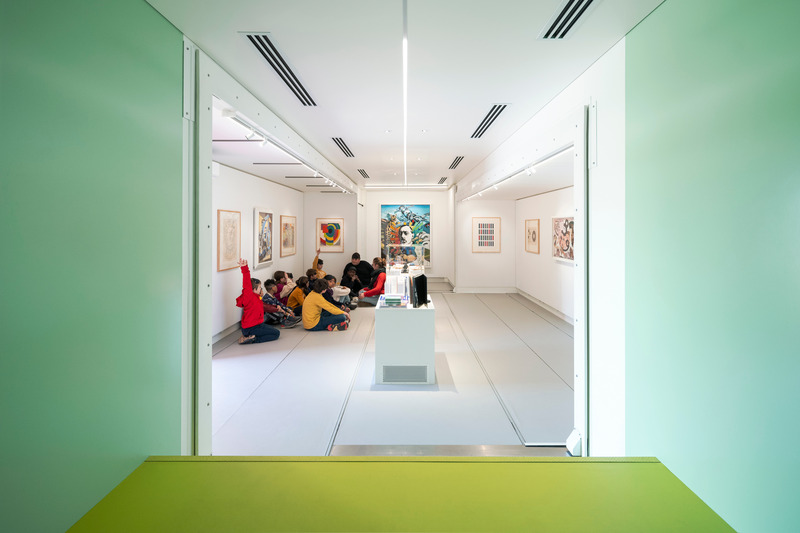
The work of Krijn de Konning: Furniture and Color
Beyond its functionality, the truck museum is a pictorial and sculptural work.
The color palette on each side of the truck was defined by Krijn de Koning.
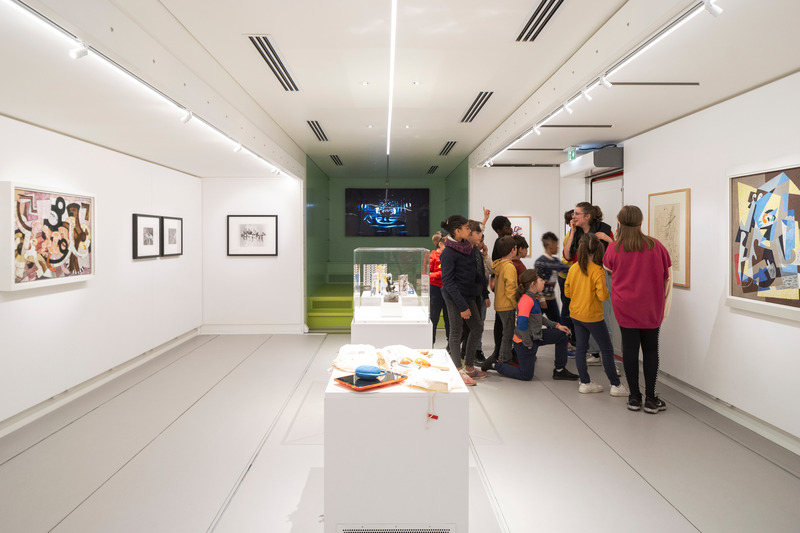
The interior color of the loggia is revealed when it is unfolded: the bright red contrasts with the green facade, highlighting this welcoming space that opens onto the public space.
Inside, the alcove is also a colorful space. Its faces are different shades of green that contrast with the white of the exhibition room.
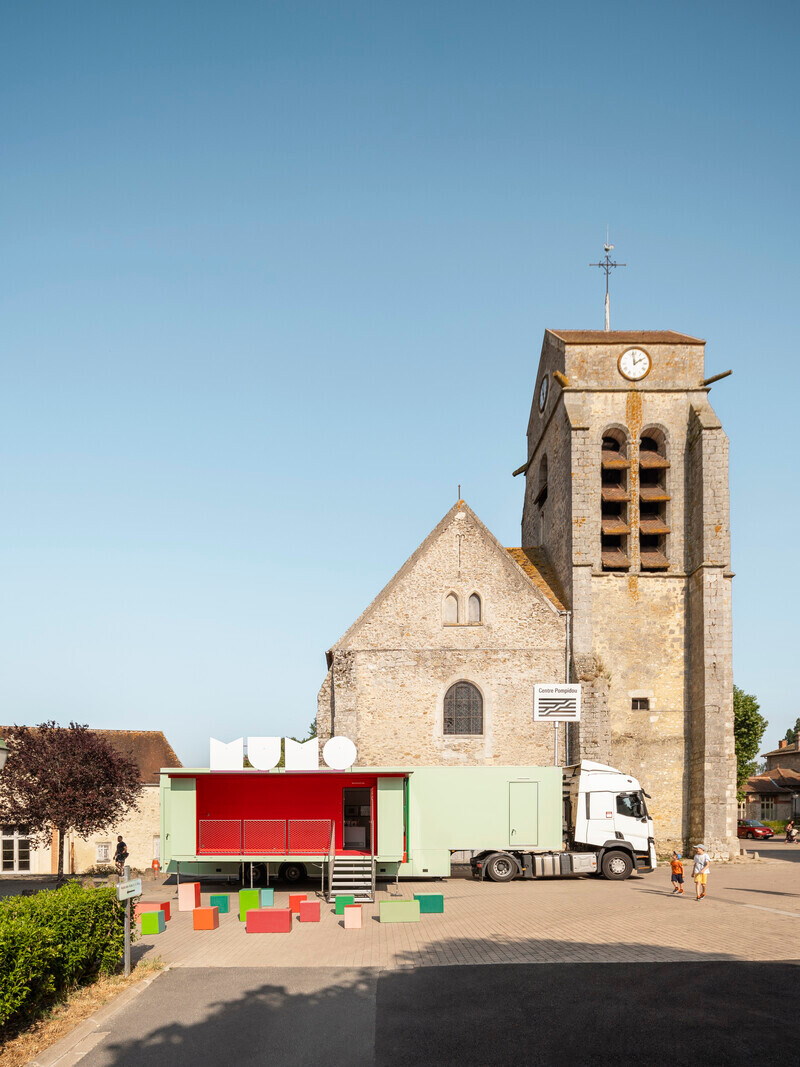
The contrast in color between the different spaces accentuates the difference in status: the colored rooms are spaces in movement that are mutable and reconfigurable.
The exhibition room, entirely white, is a place to pause, concentrate, contemplate, and be soothed.
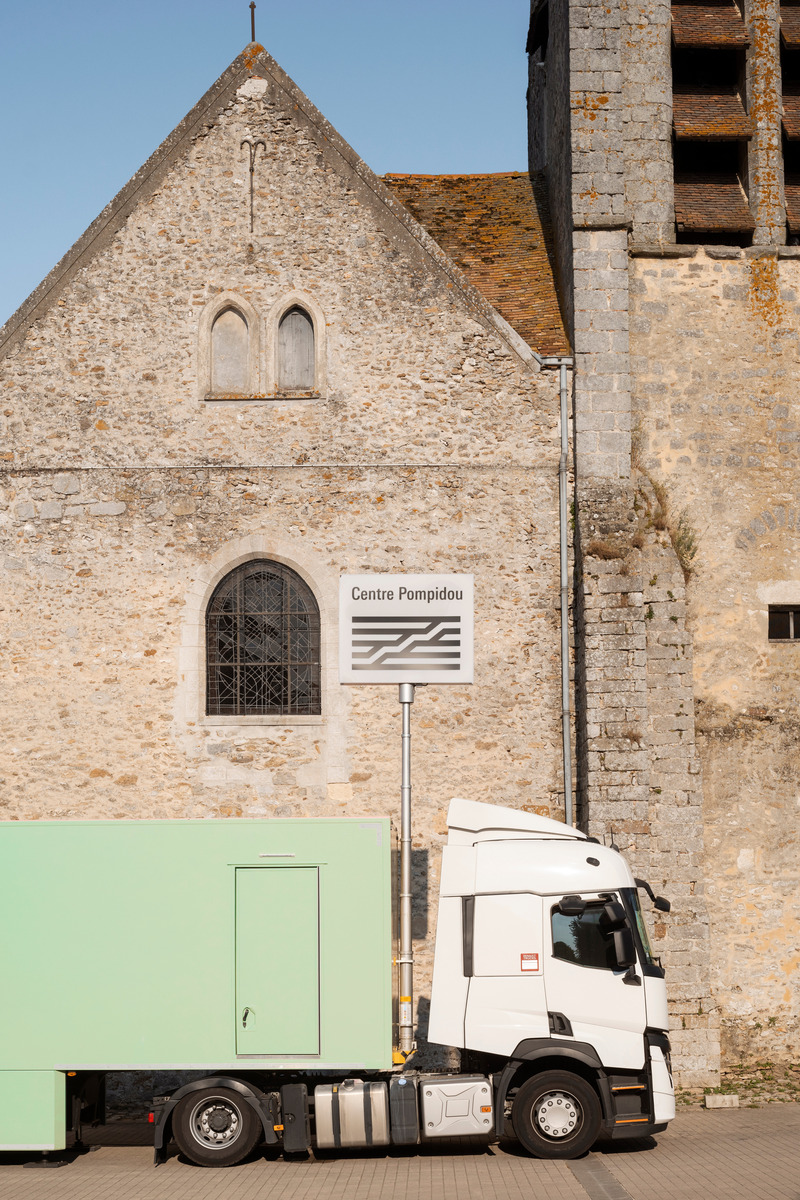
The color of the furniture is yet another extension of this color research work.
The seats are made of parallelepipeds with surfaces painted in different shades of red for the elements that are part of the loggia, and in different shades of green for those intended for the alcove.
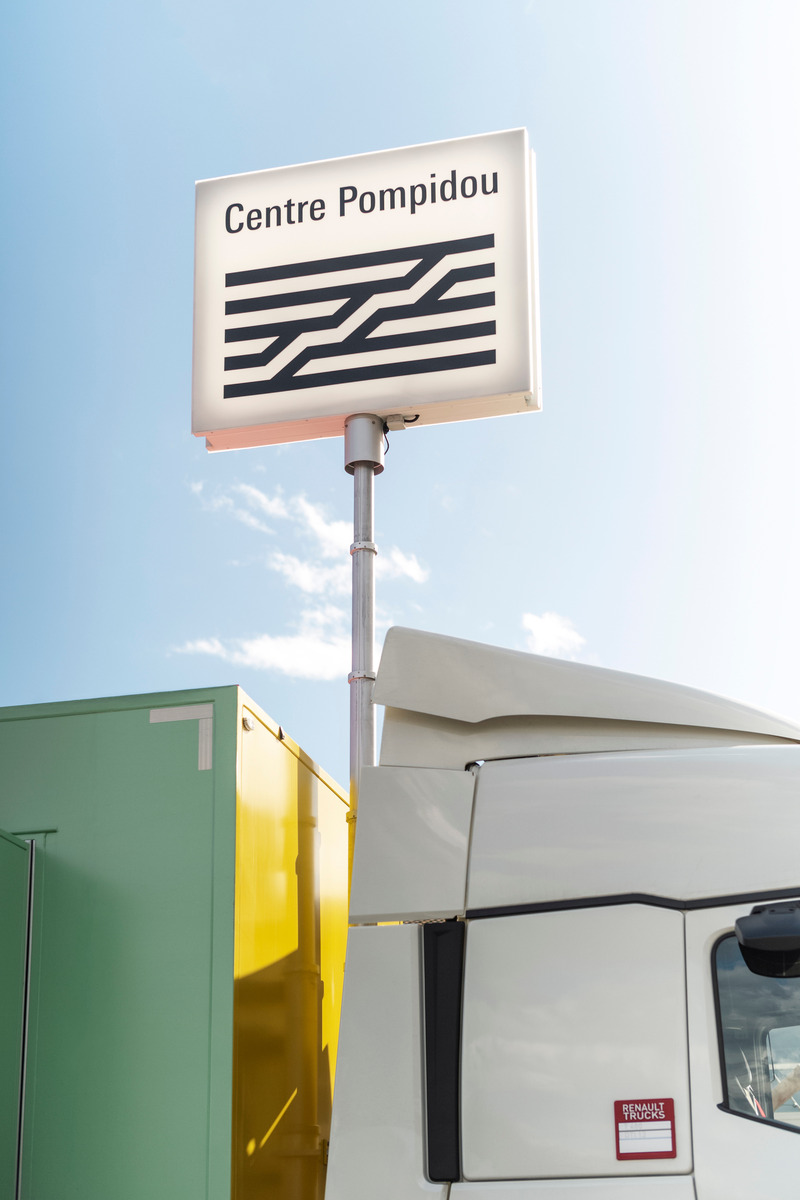
In the loggia, they provide visitors with seating while awaiting their visit.
The volumes can also be mixed, creating random compositions outside, thus enabling the public to attend a projection or a performance in the loggia.
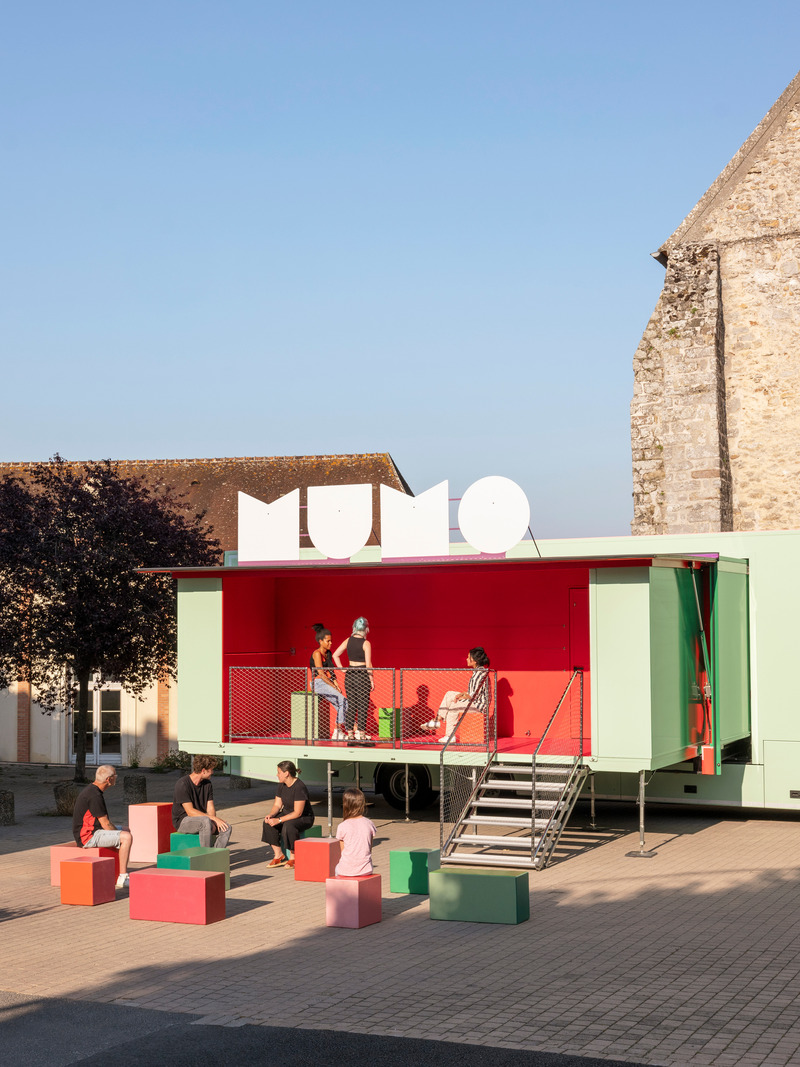
The colored volumes are arranged vertically at the back of the alcove, collectively forming a checkerboard of colors with a variety of nuances that can be configured in different ways.
These colored blocks can be mixed and matched as needed, in unexpected arrangements that create different compositions each time.
